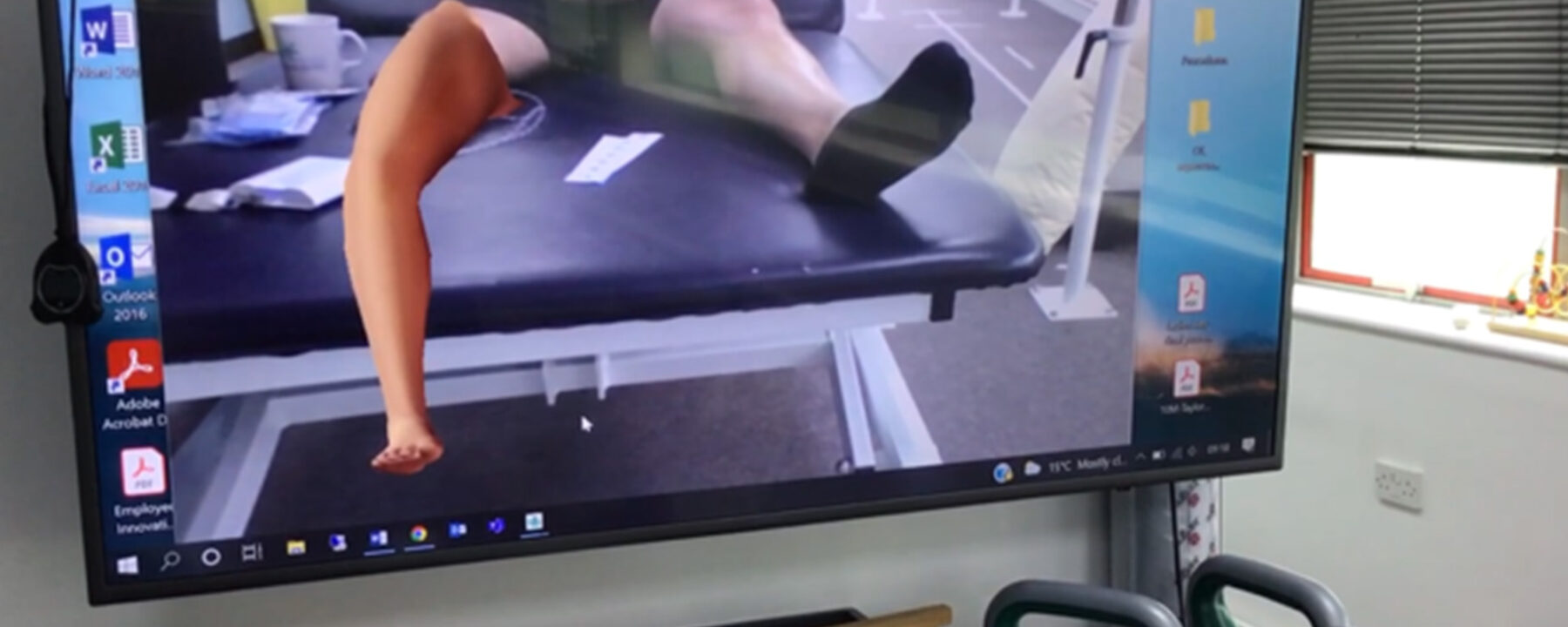
Wayne Huggitt - Pain Management Case Study
Wayne initially attended Dorset Orthopaedic for a consultation as part of a legal claim following a road traffic collision in September 2020 which resulted in a below knee amputation. He had received his prosthetic and physiotherapy rehabilitation close to home but was keen to return to running and cycling again. He also had significant phantom limb sensations which were bothersome to him, particularly when the limb was cold or inactive. These he described as squeezing of the phantom foot, strong pins and needles and the occasional electric shock. Wayne had received some pain management via his local physiotherapy department, but this had been inconsistent and his pain had worsened.
After examining Wayne, we suggested that he may benefit from our Pain Management Programme, alongside the provision of a new activity leg and, later, a running blade once the limb volume had stabilised.
On commencement of the Pain Management Programme, Wayne was questioned more closely regarding his phantom sensations and general wellbeing. This enabled us to tailor the programme to his specific issues. Persistent pain triggers are very variable and need to be addressed during the programme. These can range from physical aggravating factors such as temperature and fatigue, to emotional states such as anger and sadness, and also inappropriate beliefs, such as all pain equating to harm being caused. For Wayne, he noted that coldness was a trigger, and also a low arousal state, such as relaxing before bedtime. Conversely, when riding his motorbike or when busy, his pain was not so much of a problem. We asked Wayne to fill in a number of standard questionnaires regarding emotional influencers on his pain and these suggested that there were no signs of depression or anxiety and, whilst he graded his pain as severe, he was essentially getting on with life and not allowing it to limit what he wanted to do each day. Wayne had an appreciation that, whilst the pain he experienced was annoying, it was not physically damaging him and not something to be avoided to the detriment of reducing his physical activities.
Wayne was provided with information regarding how the brain perceives a phantom limb and why phantom limb pain occurs. In his case, the essence of the pain management programme was to re-embody the missing limb back into that part of the brain in the long term where it would normally exist, and also to reduce the pain that he was experiencing. To do this, we used a combination of Neuromotus and electroacupuncture over sixteen visits where he attended twice a week for around ninety minutes. Wayne also had a home programme where he had to regularly sit and focus on the missing limb, working through various visualisation tasks. These initially were to simply imagine the foot as present, then to imagine it moving or standing on different surfaces.
Neuromotus is a computer programme that uses the electrical signals from the muscles in the stump to re-create an image of the missing foot on a screen. The user can then move the foot around by activating their stump muscles. With practise, the ankle and toes can be moved in a number of different directions under the user’s control. Wayne noticed that he found it possible for him to activate his stump muscles and release any phantom foot cramping when at home after using the Neuromotus a few times. This meant that he had better control over his stump muscles and his brain had learnt to reactivate them appropriately to move a virtual foot.
Electroacupuncture is commonly used for pain relief. Needles are inserted into a variety of points in the stump, back and remaining foot and some are attached to a machine which delivers a small current through them. The effect of this is to reduce pain symptoms in a number of ways: an increase in the body’s own painkilling chemicals, altering sensations travelling up the spinal cord and a local effect from the needle itself.
Wayne was reassessed at the end of the programme and scores were found to have improved as per the table below. These included:
- Visual Analogue Scale (VAS) – a simple 0-10 pain score reflecting pain levels over the past week.
- Hospital Anxiety and Depression Scale (HADS) – a standardised measure of anxiety and depression.
- Pain Catastrophising Score (PCS) – this asks what the patient thinks and feels when they are in pain.
- Brief Pain Inventory (BPI) – this looks at the severity of pain and it’s impact on everyday function.
- Pain Self Efficacy Questionnaire (PSEQ) – this relates to how confident a patient feels when doing certain activities.
